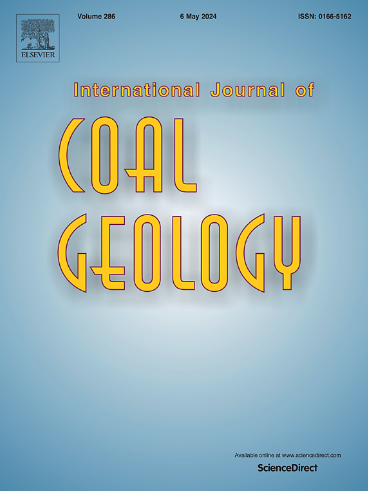Vitrinite reflectance patterns from the Riosa-Olloniego Sector (Carboniferous, Cantabrian Zone, NW Spain): Overburden implications
IF 5.7
2区 工程技术
Q2 ENERGY & FUELS
引用次数: 0
Abstract
Vitrinite reflectance is a parameter of organic matter maturity considered of paramount importance to reconstruct the history of sedimentary basins (palaeotemperature, depth of burial, unconformities, tectonic overprinting, local thermal anomalies). Although sensitive to external factors (vitrinite alteration, maceral composition, lithology) that may harm its reliability, it is still the most robust tool widely applied in sedimentary basins. In this work, vitrinite reflectance is used to study the post-sedimentary evolution of a Carboniferous (Moscovian, Asturian) succession (Riosa-Olloniego Sector, Central Asturian Coalfield) of the Cantabrian Zone foreland basin (NW Spain). Fourteen samples (coals, carbonaceous shales and channel sandstones with rip-up coaly clasts and plant fragments) from an 800-m-thick, mixed continental–marine interval and two localities, underground (coal mine) and on surface, respectively, were subjected to chemical and petrographic analyses. Attention was paid to the influence of the above-mentioned external factors. The organic matter plots in the Kerogen type III field and has a Bituminous C-B coal rank, with generally low S content. Reflectance values range from 0.79 to 1.07 Ro% with a gradient of ∼0.3 Ro%/km for both mine and surface samples, which plot along similar trends but with the latter yielding comparatively lower values. Palaeotemperatures calculated from vitrinite reflectance using the most general models yielded palaeogeothermal gradients of 23–36 °C/km and maximum burial depths of ∼3.9–5.2 km, depending on the model. It was concluded that the vitrinite reflectance was mainly governed by sedimentary burial, with differences between mine and surface values reflecting variable tectonic overburden under a neighbouring nappe (Aramo Nappe).

西班牙西北部坎塔布连石炭系Riosa-Olloniego剖面镜质组反射模式:覆岩意义
镜质组反射率是表征有机质成熟度的一个重要参数,对于重建沉积盆地的历史(古温度、埋藏深度、不整合面、构造叠加、局部热异常)具有重要意义。尽管外部因素(镜质组蚀变、显微成分、岩性)可能会影响其可靠性,但它仍然是沉积盆地中广泛应用的最强大的工具。本文利用镜质组反射率研究了坎塔布连带前陆盆地(西班牙西北部)石炭纪(莫斯科、阿斯图里亚)演替(里奥萨—奥隆涅戈煤田)的沉积后演化。14个样品(煤、含碳质页岩和带有破碎煤屑和植物碎片的河道砂岩)分别来自800米厚的陆-海混合层和地下(煤矿)和地表两个地方,进行了化学和岩石学分析。注意了上述外部因素的影响。有机质分布在干酪根III型田,煤阶为烟煤C-B, S含量普遍较低。矿山和地表样品的反射率值范围为0.79 ~ 1.07 Ro%,梯度为~ 0.3 Ro%/km,它们沿相似的趋势绘制,但地表样品的反射率值相对较低。根据镜质组反射率计算出的古地温使用最通用的模式,根据不同的模式,古地温梯度为23-36°C/km,最大埋藏深度为~ 3.9-5.2 km。镜质组反射率主要受沉积埋藏的控制,矿区反射率与地表反射率的差异反映了邻近推覆体(阿拉莫推覆体)下构造覆岩的变化。
本文章由计算机程序翻译,如有差异,请以英文原文为准。
求助全文
约1分钟内获得全文
求助全文
来源期刊

International Journal of Coal Geology
工程技术-地球科学综合
CiteScore
11.00
自引率
14.30%
发文量
145
审稿时长
38 days
期刊介绍:
The International Journal of Coal Geology deals with fundamental and applied aspects of the geology and petrology of coal, oil/gas source rocks and shale gas resources. The journal aims to advance the exploration, exploitation and utilization of these resources, and to stimulate environmental awareness as well as advancement of engineering for effective resource management.
 求助内容:
求助内容: 应助结果提醒方式:
应助结果提醒方式:


